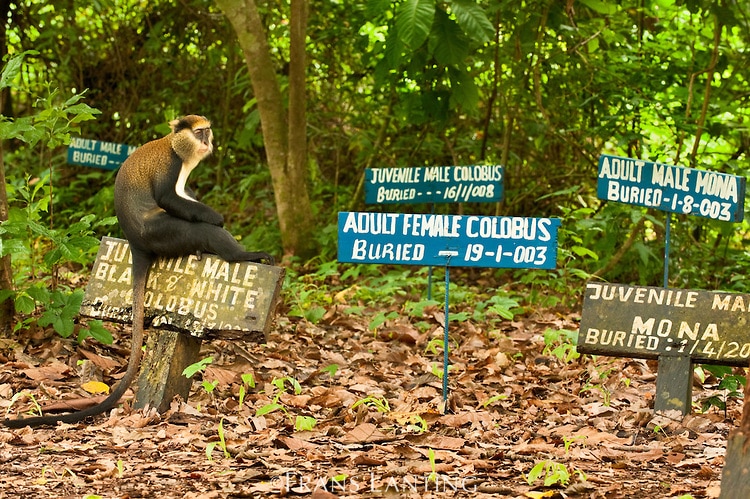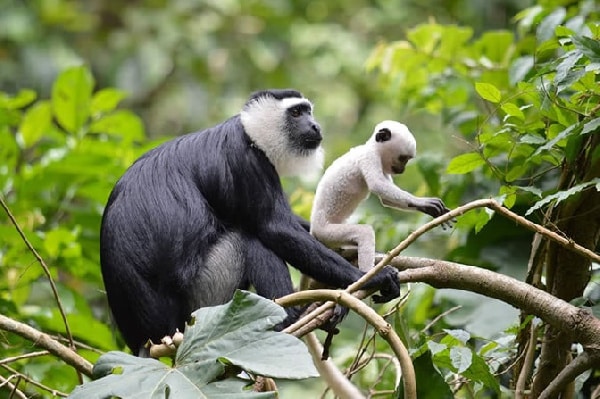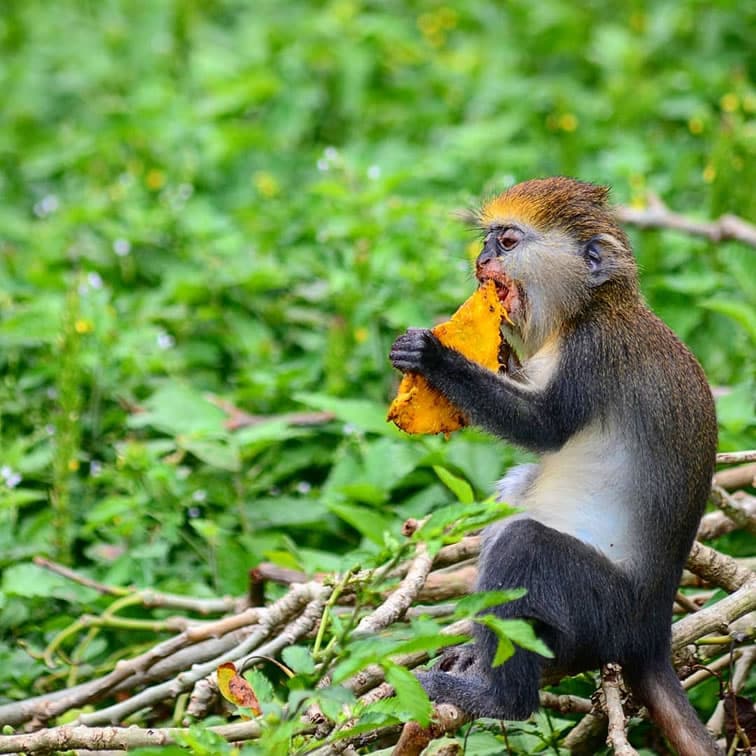The Boabeng-Fiema Monkey Wildlife Sanctuary is not only a natural habitat for a wide variety of flora and fauna but also serves as a unique example of a community living in harmony with wildlife. The sanctuary, which covers an area of 4.4 square kilometers, is located in the Boaben and Fiema communities, 22 kilometers from the Nkoranza North District in Ghana’s Bono East region.
The sanctuary, believed to have been created in the 1970s, boasts of a lush forest with many trees, birds, reptiles, deer, and over 700 monkeys, including the rare Geoffrey’s Pied Colobus and Campbell Mona monkey. The community’s relationship with the monkeys is unlike anything you will find elsewhere. The inhabitants of the village consider the monkeys to be their own and even leave food outside their homes for them to eat.
In return, the monkeys have become so comfortable around humans that they often enter people’s homes, causing little disturbance. The locals view the monkeys as an essential part of their culture and, as a result, have established customary laws that protect the animals in the sanctuary. As a result, the Boabeng-Fiema Monkey Wildlife Sanctuary has become a national tourist site, drawing visitors from far and wide who come to witness the unique relationship between humans and monkeys.
History Behind The Monkey Sanctuary
Boabeng-Fiema is a small town located in the Nkoranza North District of the Bono East region in Ghana. The town is famous for its sacred monkey sanctuary, which houses over 200 Colobus and Mona monkeys that live in harmony with the human inhabitants. The sanctuary is believed to have been established as a result of the relationship between a hunter and a spirit called Daworo sometime around 1842.
According to local folklore, the hunter encountered Daworo during one of his hunting expeditions in the forest. The spirit instructed him not to harm the monkeys he found gathered around a pot covered with calico, but instead to treat them as relatives. The hunter followed the instructions and took the calico home, and the monkeys followed him. Over time, their numbers increased, and the hunter’s fortunes also improved. He attributed his newfound wealth to his association with the monkeys and established a symbiotic relationship with them.
As a result of this relationship, the monkeys in Boabeng-Fiema have become an integral part of the community. They roam freely around the town, and the locals have come to accept them as their own. When a monkey dies, it is buried, and funeral rites are held, just as they would be for a human being.
Another settler in the area also had a similar encounter with a spirit called Abodwo, and he too established a relationship with the monkeys. Eventually, Abodwo and the settler got married, and the monkeys were seen as the physical representations of the union.
Today, the Boabeng-Fiema Monkey Sanctuary is a popular tourist attraction, drawing visitors from all over the world who come to see the sacred monkeys and witness their unique relationship with the locals. The sanctuary is also an important cultural site, preserving the traditions and beliefs of the people of Boabeng-Fiema. It serves as a reminder of the importance of living in harmony with nature and respecting all living beings.
Accessing the sanctuary is relatively easy as it is located close to major roads. Tourists can get to the sanctuary by bus or taxi. Additionally, visitors can hike through the forest and view the monkeys in their natural habitat or take guided tours, which provide a more in-depth experience of the sanctuary’s history and unique community.
READ NEXT ON: The Monumental Independence Arch








































